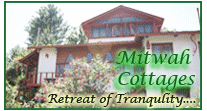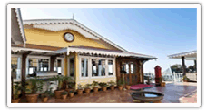|
|
|
| |
| |
Travel destination in India, Aurangabad |
|
|
| |
General Information about AURANGABAD |
Aurangabad :
Area : 10,107 sq. km.
Language : Hindi, English, Marathi and Urdu.
Altitude : 513 metres.
State : Maharashtra.
STD Code : 0240.
|
About Aurangabad
Aurangabad is tinged with a distinctive Arabian aura. The city was named after Aurangazeb but earlier it was known as Khadke. Square shaped, stone homes with smooth edges lone the street in small sections of town. Very few peple use this new name and the city's Muslim Havor is evident/ tangible amidst the tourist boom and the economic development typist of Mumbai's hinterland. Their efforts like most of their kind however seem an ineffectual charade of semantics; few use the new name, Sambhajinagar and the city's Muslim flavor endures amid the tourist boom and the economic development typical of Mumbai's hinterland.
Buddhism was introduced to this region during the reign of the powerful Mauryan Emperors and its rapid acceptance is evident in the profusion of Buddhist cave temples found in and around modern aurangabad. The Hindu temples of Ellora built by the kings of the Satvahana and Rashtrakuta dynasties predate the influx of Buddhism. Strategically located in the centre of India, the region was considered the safest from the marauding armies of the Afghan and Central Asian raiders. The Tughlaq King Mohammed bin Tughlaq of the Delhi Sultanate moved his capital from Delhi, along with the citizens to this area in the 14th century but failed due to poor logistical planning.
CLIMATE
The climate of aurangabad is temperate with moderate winters in the months of November-February and hot summers from April through to June. The summers are hot and winters are warm. But it is better to come here between October and march.
PLACES OF ATTRACTION IN AURANGABAD
• Aurangabad Caves : There are 12 Buddhist caves snuggled in the middle of hills, probably dating back to the 1 A.D. The most important ones are those with the Tantric influences, which is reflected through the iconography and architectural designs of the caves. Some of these caves show Lord Buddha seated on an intricately carved throne.
• Bibi-Ka-Maqbara : Bibi-ka-Maqbara was built by Aurangzeb in the memory of his wife Rabia-ud-Daurani Begum. This tomb bears some resemblance with the Taj Mahal, which is a major attraction for tourists coming to this place. The architecture of this tomb is magnificent which is surrounded by a garden. You will have to buy an entry ticket of a negligible amount to enter the Maqbara.
• Panchakki : Panchakki is a major attraction of Aurangabad and its literal meaning is water mill. This mill receives its share of water that travels through an underground channel from a source which is 6 km away in the mountains. The water is then discharged on to the wheel creating a fascinating waterfall. There is also a garden and fountains with fish-filled tanks adding to the charm of the entire area. Panchakki also has a tomb of Baba Shah Muzaffar, a Sufi Saint who was spiritual adviser to Aurangzeb.
• Ellora Caves : The Ellora cave temples are regarded as the World heritage sites of India. They are situated just 30 kilometers northwest of Aurangabad. It can be easily reached from the nearby major towns. There are almost 34 monasteries and temples that date back from 600 to 1000 AD. The temples of Ellora are dedicated to Brahmanism, Jainism, and Buddhism. The cave temples here have some superior carvings on the stone depicting the legends related to Lord Shiva.
• Ajanta Caves : The world heritage Ajanta caves are one of the few historical and architectural marvels of India. It was discovered accidentally during the 19th century by a group of British officers who were on a tiger hunt. These caves are located deep within the Sahyadri hills above the Waghora. They describe the story of Lord Buddha and Buddhism religion that prevailed here during 200 BC to 650 AD.
• Jama Masjid : The Jama Masjid at Aurangabad was built by Aurangzeb. It situated in the center of a grove of trees in Killa Arrack. The Masjid has a low building with minarets and a broad band. This broad band is carved with Koranic inscriptions written through the length of the facade.
|
|
|
| |
|
|
|







